Although it’s sometimes forgotten about, Shikoku, one of the four large islands that make up mainland Japan, is as much a part of the country as Hokkaidō in the north and Kyūshū to the south. People eat rāmen, do karaoke and play pachinko, exactly like everywhere else. Take a drive around the island and, just like every other part of the country, you’ll find literally hundreds of convenience stores. Lawson, Family Mart, Mini Stop, Coco Store; they’re all here.
All, that is, except 7-Eleven….
Despite its 14,000 stores making it the dominant convenience store in Japan (with Lawson coming in second with 10,639 locations and Family Mart’s 8,852 bringing up the rear) 7-Eleven has, according to internet chatter, completely avoided an entire chunk of Japan. Can it really be true that, while every other convenience store is opening stores all over Shikoku, there isn’t a single 7-Eleven outlet on the island? A quick Google Maps search of Japan’s top three convenience stores reveals that – gasp- it really is true!
So, why, when there are an incredible 14,000 7-Eleven stores in Japan, comprising more than 30% of the entire world’s total, are there zero on Shikoku? A voodoo curse? A lost bet resulting in exile? The answer is at once far less glamorous, yet much more menacing, and can be summed up in a single word: “Domination”
“They’re coming to get you, Barbara…”
Toshifumi Suzuki, CEO at 7-Eleven (or 7 & i Holdings, as its parent group in Japan is now known), explains the company’s business strategy thus:
“7-Eleven’s business plan revolves around area domination;” Suzuki explains, “from the outset, we look at an area and assess whether it’s viable to build a large number of stores. If so, we focus our attention on one small area.”
Focusing all of their efforts and resources on any one area at a time plays an important role in keeping costs to a minimum. Everything from distribution of stock to the reach of their advertising campaigns can be confined to one location. “On top of this,” Suzuki explains, “our food arrives faster and fresher.”
But that’s not all there is to it. What we see in the 7-Eleven business model is something akin to a small but very powerful explosion, focused entirely in one area…
“Once one store has been opened, more follow in quick succession. Word of mouth spreads, and people become more and more familiar with the sight of our stores as they run into them more and more often … Although at first, each of the stores make only a minimal profit, once people’s recognition of the brand reaches a certain level, we see a sudden and dramatic increase in both visits to the store and sales figures” he explains, perhaps while standing over a map of Japan covered in groups of tiny model 7-Elevens.
So, rather than spreading themselves thin, 7-Eleven moves in, opens a bunch of stores and takes control of an entire area, the sight of each store acting as a sort of subliminal reminder.
Now that we come to think of it, whenever we’ve come across a 7-Eleven store in the city, we usually stumble over another one in no time at all… Looking back at our map, we can see that, while its competitors can be found pretty much all over the country, 7-Eleven remains focused on fewer, key areas, each with almost double the number of stores. They really do spring up in clusters!
It’s clear that this strategy works well for the company. If we take the city of Osaka as an example, looking back at the late ‘90s, the city was very much “Lawson territory”. But within just a few years of 7-Eleven’s arrival in town, an incredible 300 stores had sprung up. In the blink of an eye, 7-Eleven had become top dog, and nowadays you couldn’t walk down a street in Osaka without running into one.
So, why avoid Shikoku?
According to 7-Eleven’s information centre,”there are no immediate plans to move into town, but it will happen.” And when it happens… they’ll dominate.
Did anyone else just shiver?
Source: Zasshi News via Yahoo Japan
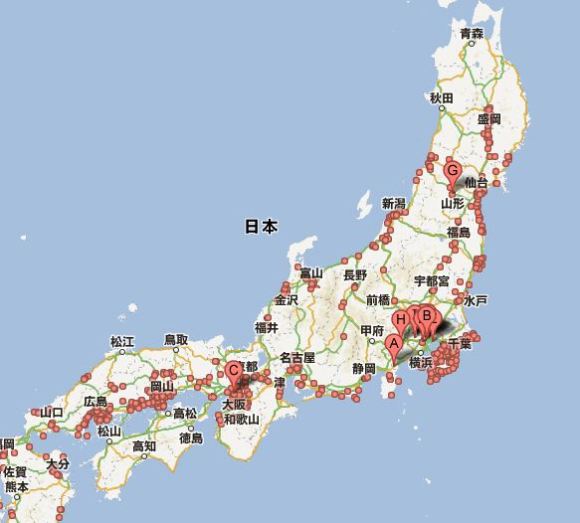
A map showing 7-Eleven locations across Japan (sorry, Hokkaido). You’re next, Shikoku…

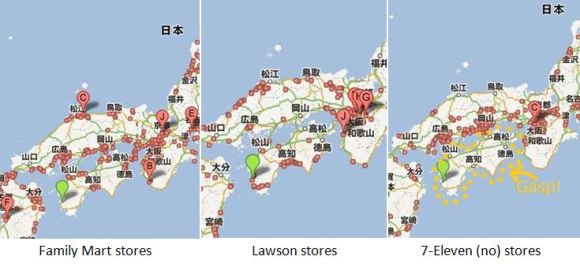
 7-Eleven Japan’s “Paper Tiger” sandwich sparks online controversy over deceptive packaging
7-Eleven Japan’s “Paper Tiger” sandwich sparks online controversy over deceptive packaging Japanese pantyhose commercial quiz asks viewers to pick out the sole woman in stockings 【Video】
Japanese pantyhose commercial quiz asks viewers to pick out the sole woman in stockings 【Video】 This 7-Eleven convenience store causes a buzz with foreigners online
This 7-Eleven convenience store causes a buzz with foreigners online Saitama man robs 7-Eleven with knives, steals 3 onigiri
Saitama man robs 7-Eleven with knives, steals 3 onigiri Half of 7-Elevens in Japan to start selling 100-yen Daiso products this month
Half of 7-Elevens in Japan to start selling 100-yen Daiso products this month Starbucks releases special matcha Frappuccino made with Japan’s first matcha leaves of the year
Starbucks releases special matcha Frappuccino made with Japan’s first matcha leaves of the year Tokyo’s beckoning cat temple asks foreign tourists to stop writing on the beckoning cats they buy
Tokyo’s beckoning cat temple asks foreign tourists to stop writing on the beckoning cats they buy Japanese man tells friend to wear suit to wedding party, so he comes as Mobile Suit Gundam
Japanese man tells friend to wear suit to wedding party, so he comes as Mobile Suit Gundam Lots of Japanese parents want their kids to work for Nintendo, but not just for the money, survey says
Lots of Japanese parents want their kids to work for Nintendo, but not just for the money, survey says 2nd line of Casio watch rings hits Japanese capsule machines and we got the secret one!
2nd line of Casio watch rings hits Japanese capsule machines and we got the secret one! Starbucks Japan’s new Matcha Frappuccino: Brilliant beverage or drink disaster?
Starbucks Japan’s new Matcha Frappuccino: Brilliant beverage or drink disaster? New vending machines at Shinjuku Station emit scent, play projection mapping with your purchase
New vending machines at Shinjuku Station emit scent, play projection mapping with your purchase Mt. Fuji-blocking screen installed as response to bad tourist manners to be in place by next week
Mt. Fuji-blocking screen installed as response to bad tourist manners to be in place by next week 35 fascinating photos of Korea from 100 years ago (before K-dramas took over Asia)
35 fascinating photos of Korea from 100 years ago (before K-dramas took over Asia) Studio Ghibli releases new mug and tumbler collection featuring Jiji and Totoro
Studio Ghibli releases new mug and tumbler collection featuring Jiji and Totoro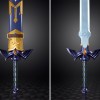 Life-size vibrating Legend of Zelda Master Sword for sale from Nintendo【Photos】
Life-size vibrating Legend of Zelda Master Sword for sale from Nintendo【Photos】 Yes, our new smartphone looks like at least two Studio Ghibli anime characters, Sharp says
Yes, our new smartphone looks like at least two Studio Ghibli anime characters, Sharp says New Tokyo restaurant charges higher prices to foreign tourists than Japanese locals
New Tokyo restaurant charges higher prices to foreign tourists than Japanese locals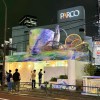 Japanese public toilet becomes a tourist attraction in Tokyo
Japanese public toilet becomes a tourist attraction in Tokyo Tokyo’s famous Lost in Translation hotel is closed
Tokyo’s famous Lost in Translation hotel is closed Studio Ghibli releases art crystal puzzles and folding umbrellas for rainy season in Japan
Studio Ghibli releases art crystal puzzles and folding umbrellas for rainy season in Japan Cool capsule toys recreate how Japan navigated trains in pre-smartphone days【Photos】
Cool capsule toys recreate how Japan navigated trains in pre-smartphone days【Photos】 McDonald’s new Happy Meals offer up cute and practical Sanrio lifestyle goods
McDonald’s new Happy Meals offer up cute and practical Sanrio lifestyle goods Foreigner’s request for help in Tokyo makes us sad for the state of society
Foreigner’s request for help in Tokyo makes us sad for the state of society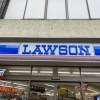 “Mt. Fuji convenience store” issues apology for bad tourist manners, adds multilingual signs
“Mt. Fuji convenience store” issues apology for bad tourist manners, adds multilingual signs Japanese ramen restaurants under pressure from new yen banknotes
Japanese ramen restaurants under pressure from new yen banknotes Bad tourist manners at Mt Fuji Lawson photo spot prompts Japanese town to block view with screens
Bad tourist manners at Mt Fuji Lawson photo spot prompts Japanese town to block view with screens Sales of Japan’s most convenient train ticket/shopping payment cards suspended indefinitely
Sales of Japan’s most convenient train ticket/shopping payment cards suspended indefinitely Sold-out Studio Ghibli desktop humidifiers are back so Totoro can help you through the dry season
Sold-out Studio Ghibli desktop humidifiers are back so Totoro can help you through the dry season Japanese government to make first change to romanization spelling rules since the 1950s
Japanese government to make first change to romanization spelling rules since the 1950s Ghibli founders Toshio Suzuki and Hayao Miyazaki contribute to Japanese whisky Totoro label design
Ghibli founders Toshio Suzuki and Hayao Miyazaki contribute to Japanese whisky Totoro label design Tokyo’s most famous Starbucks is closed
Tokyo’s most famous Starbucks is closed Doraemon found buried at sea as scene from 1993 anime becomes real life【Photos】
Doraemon found buried at sea as scene from 1993 anime becomes real life【Photos】 One Piece characters’ nationalities revealed, but fans have mixed opinions
One Piece characters’ nationalities revealed, but fans have mixed opinions We asked a Uniqlo employee what four things we should buy and their suggestions didn’t disappoint
We asked a Uniqlo employee what four things we should buy and their suggestions didn’t disappoint Japanese convenience store’s cheap knockoff croissant — is it any good?
Japanese convenience store’s cheap knockoff croissant — is it any good? We ate “pizza-buns” from four different Japanese convenience stores to find which reigns supreme
We ate “pizza-buns” from four different Japanese convenience stores to find which reigns supreme This buttery, garlicky sausage and rice recipe is simple, cheap, and pretty much to die for
This buttery, garlicky sausage and rice recipe is simple, cheap, and pretty much to die for 12 totally addictive and appetizing convenience store sweets
12 totally addictive and appetizing convenience store sweets 7-Eleven opens “next generation” SIP convenience store in Japan
7-Eleven opens “next generation” SIP convenience store in Japan 7-Eleven escalates anime goody arms race with gigantic Evangelion statue that could be yours
7-Eleven escalates anime goody arms race with gigantic Evangelion statue that could be yours 7-Eleven Japan now has plant-based vegetarian steamed “meat buns”
7-Eleven Japan now has plant-based vegetarian steamed “meat buns” 7-Eleven apologises for cockroaches in onigiri rice balls
7-Eleven apologises for cockroaches in onigiri rice balls Which convenience store has the best kakuni Japanese braised pork? We find out【Taste test】
Which convenience store has the best kakuni Japanese braised pork? We find out【Taste test】 Inside the rogue 7-Eleven, a convenience store completely cut off by its company
Inside the rogue 7-Eleven, a convenience store completely cut off by its company You can power-up your stomach with Super Mario breads at Japanese convenience stores
You can power-up your stomach with Super Mario breads at Japanese convenience stores The Fuwatoro Yamaimo Teppan just might be 7-Eleven Japan’s dish of the year【Taste test】
The Fuwatoro Yamaimo Teppan just might be 7-Eleven Japan’s dish of the year【Taste test】 7-Eleven’s new whipped cream sandwich takes Japanese convenience store food to a whole new level
7-Eleven’s new whipped cream sandwich takes Japanese convenience store food to a whole new level Which Japanese convenience store has the best lucky sushi roll? Unclear results show clear winner
Which Japanese convenience store has the best lucky sushi roll? Unclear results show clear winner Which Japanese convenience store sells the best onigiri rice balls?【Taste test】
Which Japanese convenience store sells the best onigiri rice balls?【Taste test】
Leave a Reply